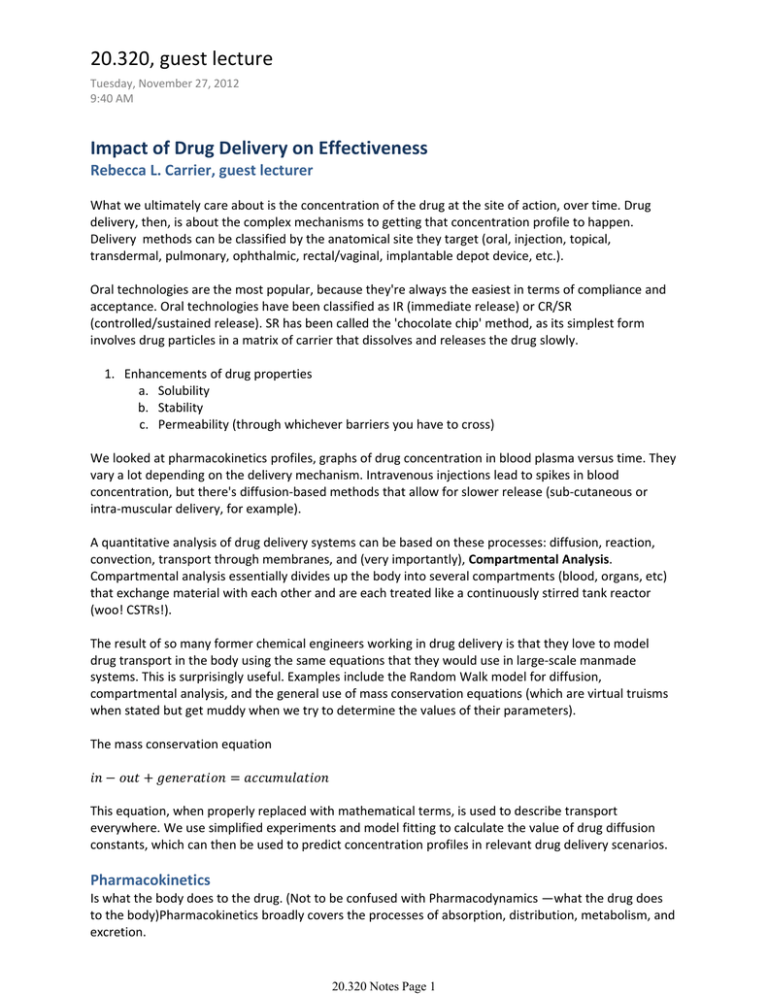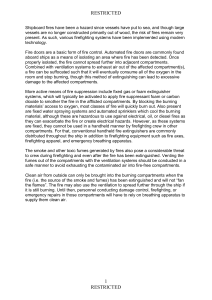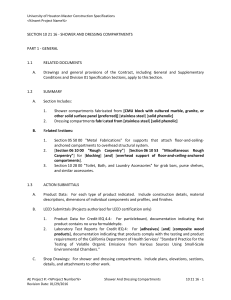advertisement

20.320, guest lecture Tuesday, November 27, 2012 9:40 AM Impact of Drug Delivery on Effectiveness Rebecca L. Carrier, guest lecturer What we ultimately care about is the concentration of the drug at the site of action, over time. Drug delivery, then, is about the complex mechanisms to getting that concentration profile to happen. Delivery methods can be classified by the anatomical site they target (oral, injection, topical, transdermal, pulmonary, ophthalmic, rectal/vaginal, implantable depot device, etc.). Oral technologies are the most popular, because they're always the easiest in terms of compliance and acceptance. Oral technologies have been classified as IR (immediate release) or CR/SR (controlled/sustained release). SR has been called the 'chocolate chip' method, as its simplest form involves drug particles in a matrix of carrier that dissolves and releases the drug slowly. 1. Enhancements of drug properties a. Solubility b. Stability c. Permeability (through whichever barriers you have to cross) We looked at pharmacokinetics profiles, graphs of drug concentration in blood plasma versus time. They vary a lot depending on the delivery mechanism. Intravenous injections lead to spikes in blood concentration, but there's diffusion‐based methods that allow for slower release (sub‐cutaneous or intra‐muscular delivery, for example). A quantitative analysis of drug delivery systems can be based on these processes: diffusion, reaction, convection, transport through membranes, and (very importantly), Compartmental Analysis. Compartmental analysis essentially divides up the body into several compartments (blood, organs, etc) that exchange material with each other and are each treated like a continuously stirred tank reactor (woo! CSTRs!). The result of so many former chemical engineers working in drug delivery is that they love to model drug transport in the body using the same equations that they would use in large‐scale manmade systems. This is surprisingly useful. Examples include the Random Walk model for diffusion, compartmental analysis, and the general use of mass conservation equations (which are virtual truisms when stated but get muddy when we try to determine the values of their parameters). The mass conservation equation ݅݊ െ ݐݑ ݃݁݊݁ ݊݅ݐܽݎൌ ܽܿܿ݊݅ݐ݈ܽݑ݉ݑ This equation, when properly replaced with mathematical terms, is used to describe transport everywhere. We use simplified experiments and model fitting to calculate the value of drug diffusion constants, which can then be used to predict concentration profiles in relevant drug delivery scenarios. Pharmacokinetics Is what the body does to the drug. (Not to be confused with Pharmacodynamics —what the drug does to the body)Pharmacokinetics broadly covers the processes of absorption, distribution, metabolism, and excretion. 20.320 Notes Page 1 Bioavailability I defined as a ratio of the areas under the curves (AUCs) of plasma concentration versus time. The AUC for intravenous injection is the standard, and any other delivery method is compared against that. Compartmental analysis These compartments don't usually correspond to actual bodily compartments, but they're still useful. The simplest case is the single‐compartment model. All the compartments are considered to be uniform and well‐mixed. In cases where the drug doesn't readily distribute to the whole body immediately, it's better to model things with more than one model. For example, using two of them: 20.320 Notes Page 2 And finally, the most complete case is to use a pharmacokinetic model with a physiological basis. Models like this exist which have compartments for all manner of organs and systems, and estimated constants for transport between all of them. This is a hot topic at the FDA these days. Their basis on physiology makes them easier to modify for different applications (such as children vs. adults) and generally more accurate and generalizable. 20.320 Notes Page 3 MIT OpenCourseWare http://ocw.mit.edu 20.320 Analysis of Biomolecular and Cellular Systems Fall 2012 For information about citing these materials or our Terms of Use, visit: http://ocw.mit.edu/terms.






![arXiv:math/0412193v3 [math.PR] 2 Apr 2008](http://s2.studylib.net/store/data/018475032_1-be88da129f8b6071330f2cfa0091590c-300x300.png)